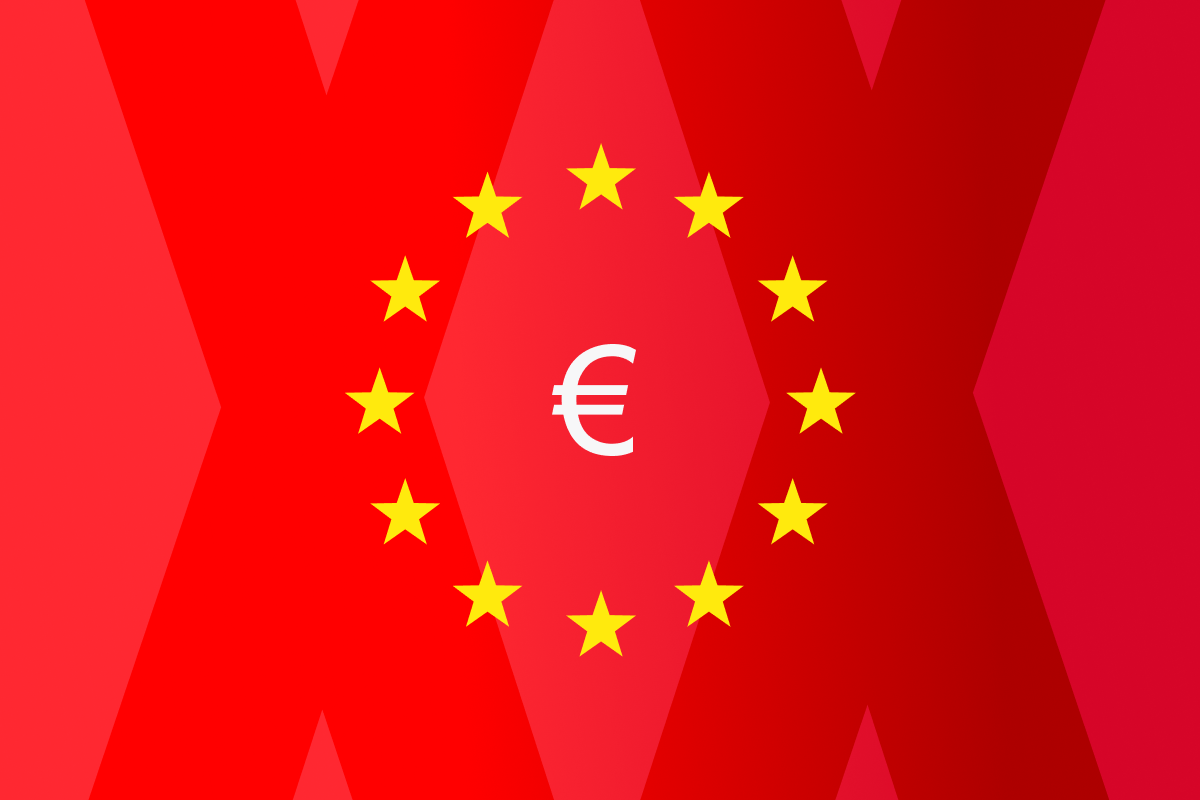Trading Signals 05/02 – 09/02
The Eurozone’s Economic Downturn: What Lies Ahead for the Euro?

The Eurozone, a monetary union of 19 of the 27 European Union (EU) member states which have adopted the euro as their currency, has officially declared a recession. This economic downturn, characterized by a significant decline in economic activity spread across the economy, lasting more than a few months, has raised concerns about the future of the euro. As the world watches, the question on everyone’s mind is: what will happen to the euro?
The Eurozone’s Situation
The Eurozone economy contracted by 0.1% in the first quarter of 2023, as reported by Bloomberg, citing revised data from Eurostat. This marks the second consecutive quarter of decline, with a similar 0.1% drop in the fourth quarter of the previous year. This is the first semi-annual recession in Europe since the coronavirus pandemic. This occurred against the backdrop of a sharp increase in energy prices during the winter period, triggered by Russia’s “military special operation” in Ukraine and the sanctions imposed against Russia by Western countries. The recession is a blow to EU politicians and European Central Bank (ECB) staff, who repeatedly stated that the downturn could be prevented, even as inflation soared to an all-time high in the Eurozone.
According to Eurostat, the Eurozone’s GDP decline in the first quarter was due to a reduction in government spending and household expenditure. The decrease in inventory of goods and materials also contributed negatively, while the recovery of trade provided support to the European economy. Out of the 20 Eurozone countries, seven were affected by the recession. In the first quarter of this year, the economies of Germany, Lithuania, Malta, the Netherlands, Greece, Ireland, and Estonia contracted, with their GDP not growing since the end of 2021.
However, European authorities expect the situation to improve in the second quarter. According to the European Commission’s updated forecast, European GDP will increase by 1.1% by the end of 2023, and grow by 1.6% in 2024. Inflation currently exceeds the target 2% by three times, but last month both the core and headline figures fell more than expected, following falling inflation expectations.
The Role of European Central Bank (ECB) Role
The European Central Bank (ECB) has cranked up the borrowing costs to a level not seen in over two decades, holding its ground in the inflation slugfest even as the Eurozone’s economic engine cools off. Market gurus are betting on an eighth straight uptick in the deposit rate, jacking it up to 3.5%, a high-water mark last touched in 2001. Another rate hike is on the cards for July, with more ammo possibly being unloaded in September.
Even though inflation in the Eurozone has been taking a breather for a few months, it’s still clocking in at a hard-to-stomach 6.1% for the ECB, a whopping three times its 2% bullseye. This is likely to keep the ECB on the monetary tightening treadmill, especially after it missed the mark on calling the current inflation spike and was late to the rate-hiking party compared to many of its global buddies last year. The ECB’s crystal ball is expected to show inflation inching closer to, but still overshooting, 2% next year before nailing the target in 2025. However, the ECB has been giving the side-eye to its own forecasts after years of off-target predictions. Instead, it’s been zeroing in on the hard economic data, which sketches a patchwork picture of the Eurozone economy.
While the Eurozone economy is only expected to eke out modest growth this year, the jobless rate is hitting rock bottom and paychecks are getting fatter. Despite the chilling effect of higher borrowing costs on the appetite for credit, spending power remains beefy in nominal terms. These dynamics are likely to sway both the hawks and doves in the ECB’s decision-making squad, leading to a more even-keeled narrative about the economic horizon.
Looking Ahead
In light of technical analysis, one might conjecture that, given the Federal Reserve’s hiatus in rate increases, the EUR/USD pair could be trading in the vicinity of 1.0955 by the end of June..
As the Eurozone navigates this challenging economic landscape, it will be crucial for policymakers to take actions that support economic recovery while maintaining confidence in the euro. This could include measures such as fiscal stimulus, structural reforms to improve competitiveness, and efforts to strengthen the governance of the Eurozone.
Oil: A Review of Early 2024
China’s Economy: Early 2024
Simple Strategy for Beginner Traders

